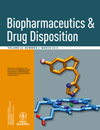Utility of a physiologically–based pharmacokinetic (PBPK) modeling approach to quantitatively predict a complex drug–drug–disease interaction scenario for rivaroxaban during the drug review process: implications for clinical practice
Preliminary results of PBPK model development were presented in poster and abstract form at the 111th annual meeting of the American Society for Clinical Pharmacology and Therapeutics, Atlanta, GA, March 17–20, 2010; however, the conclusions regarding erythromycin were not presented.
This case was also presented as a brief summary as part of a case series on the use of PBPK modeling in regulatory review at FDA (Zhao P, et al. Clin Pharmacol Ther 2011; advance online publication 29 December 2010. doi:10.1038/clpt.2010.298).
The publisher or recipient acknowledges right of the U.S. government to retain a nonexclusive, royalty-free license in and to any copyright covering the article.
The views expressed herein are independent work and do not necessarily represent the views of the U.S. Food and Drug Administration.
ABSTRACT
Background
Rivaroxaban is an oral Factor Xa inhibitor. The primary objective of this communication was to quantitatively predict changes in rivaroxaban exposure when individuals with varying degrees of renal impairment are co-administered with another drug that is both a P-gp and a moderate CYP3A4 inhibitor.
Methods
A physiologically based pharmacokinetic (PBPK) model was developed to simulate rivaroxaban pharmacokinetics in young (20–45 years) or older (55–65 years) subjects with normal renal function, mild, moderate and severe renal impairment, with or without concomitant use of the combined P-gp and moderate CYP3A4 inhibitor, erythromycin.
Results
The simulations indicate that combined factors (i.e., renal impairment and the use of erythromycin) have a greater impact on rivaroxaban exposure than expected when the impact of these factors are considered individually. Compared with normal young subjects taking rivaroxaban, concurrent mild, moderate or severe renal impairment plus erythromycin resulted in 1.9-, 2.4- or 2.6-fold increase in exposure, respectively in young subjects; and 2.5-, 2.9- or 3.0-fold increase in exposure in older subjects.
Conclusions
These simulations suggest that a drug–drug–disease interaction is possible, which may significantly increase rivaroxaban exposure and increase bleeding risk. These simulations render more mechanistic insights as to the possible outcomes and allow one to reach a decision to add cautionary language to the approved product labeling for rivaroxaban. Copyright © 2012 John Wiley & Sons, Ltd.




